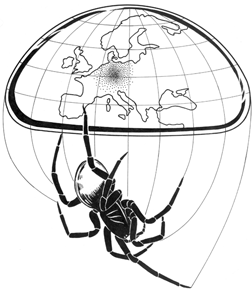Arachnologische Mitteilungen
https://arages.de/zeitschrift/arachnologische-mitteilungenHaase H & Balkenhol B
Die Auswirkung der Habitatheterogenität des Dubringer Moores auf die Spinnenfauna (Araneae)
Effects of habitat heterogeneity on spider assemblages (Araneae) in the Dubringer Moor
Heft 50
Destruction of peat bogs by drainage, peat digging, agriculture and forestry in Central Europe represents a serious threat for the conservation of adapted species and characteristic habitat types. As a basis to form recommendations for renaturation procedures we investigated spider assemblages from different habitat types on the Dubringer Moor (Saxony, Germany). Spiders were recorded by pitfall trapping in 2012 in an Erica tetralix bog, a degenerated stage of the bog dominated by Molinia caerulea, two varieties of birch wood and four varieties of Picea abies forests. 22 of the 130 recorded spider species are endangered (Red Data Books of Germany and Saxony). Indicator species for different habitat types were found. Tyrphophilic and photohygrophilic species are characteristic for the peat bog stand as well as xerophylic spiders of dry heathlands – in the latter case caused by the more xerothermous conditions on the tops of hummocks. From the perspective of nature conservation the spruce-birch forests offer a more diverse habitat structure, photic and hygric amplitude than the spruce forest monocoenosis, resulting in a more diverse spider assemblage. Therefore, these woods could represent ’stepping stones’ for some species linking to rare Betula pubescens stands. The renaturation of the damaged bog sites should be enhanced by blocking ditches and cutting spruce, leading to reduced evaporation and re-wetting of the area
diversity, indicator species, monitoring, peat bog, spider communities, succession


